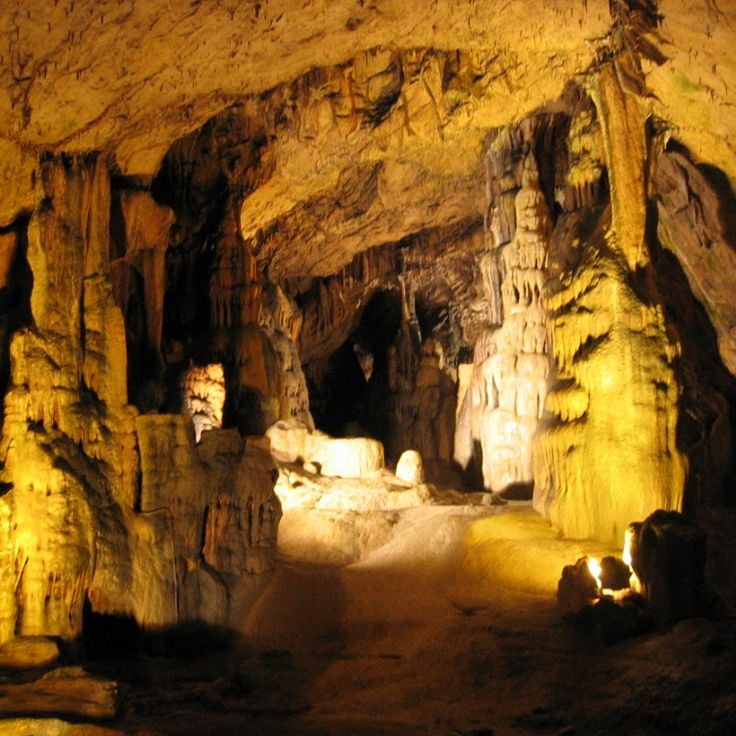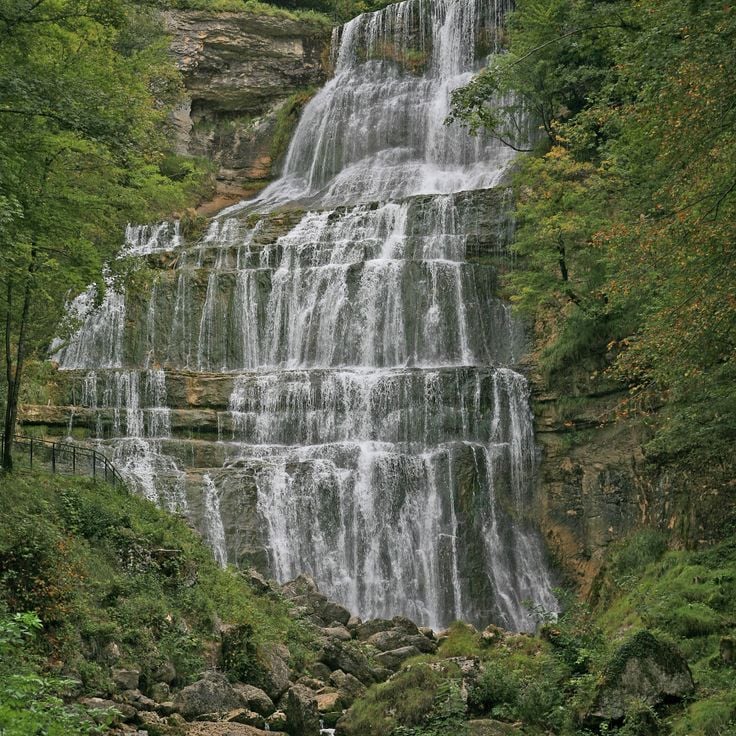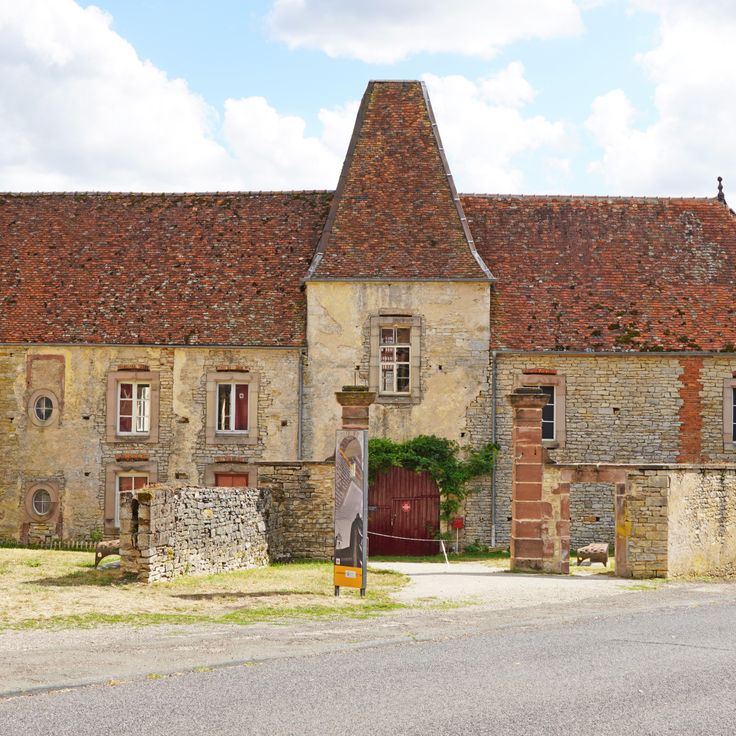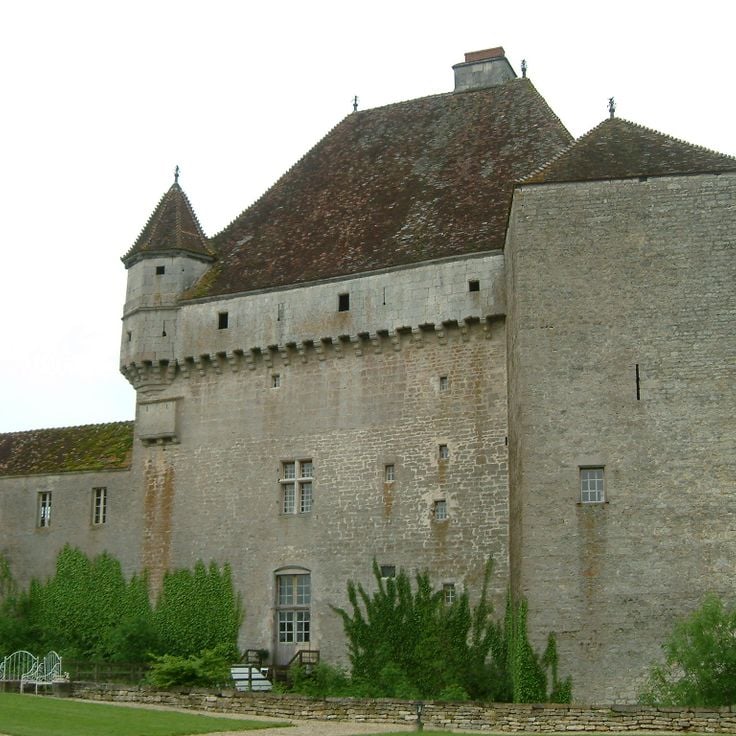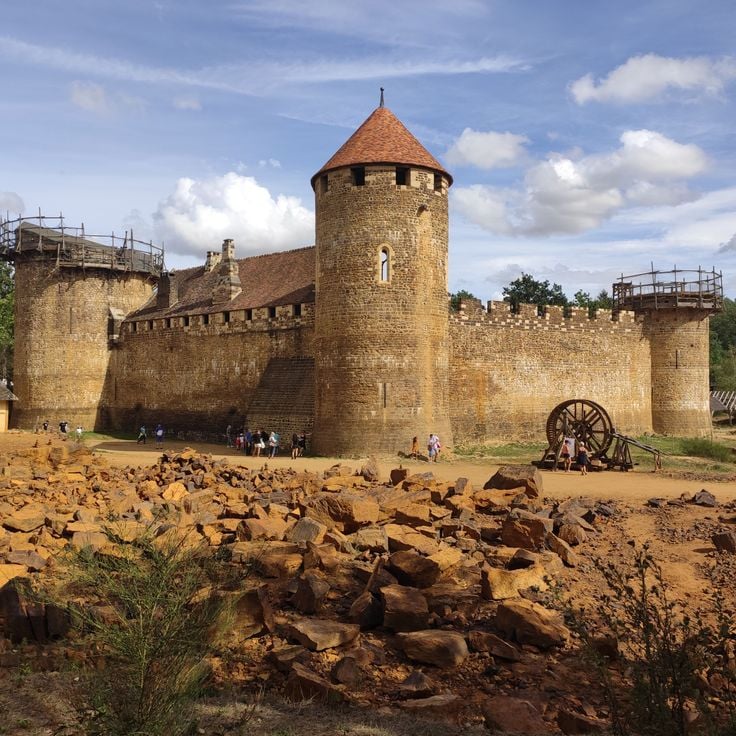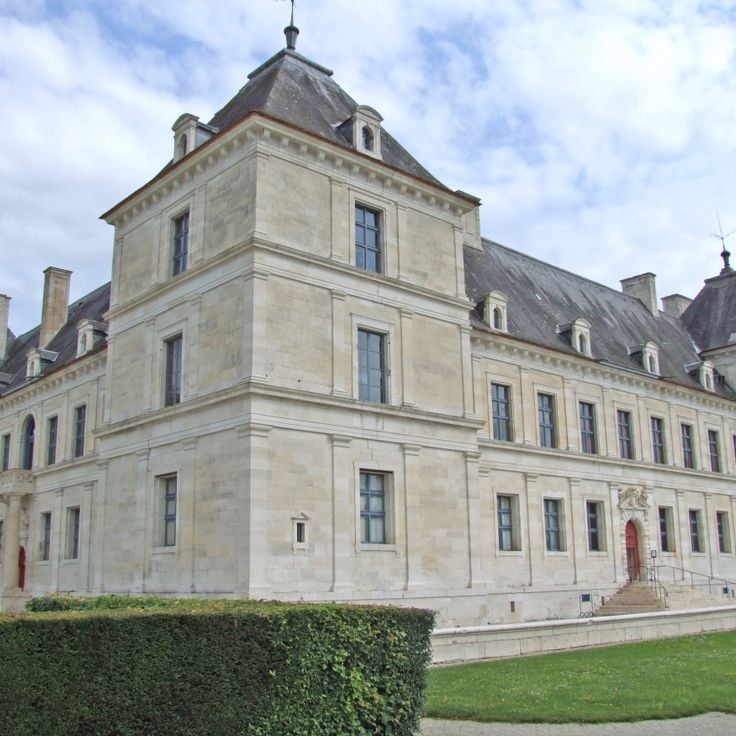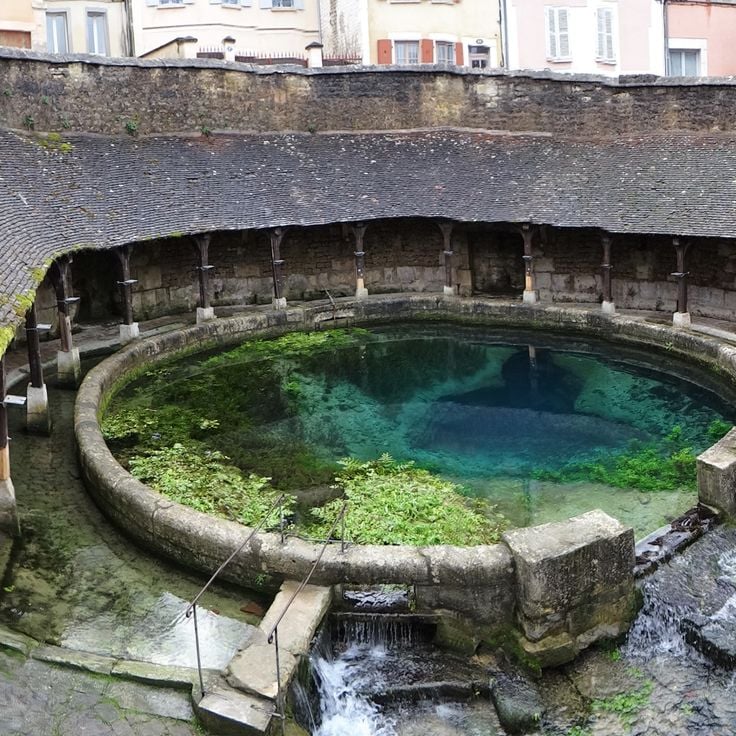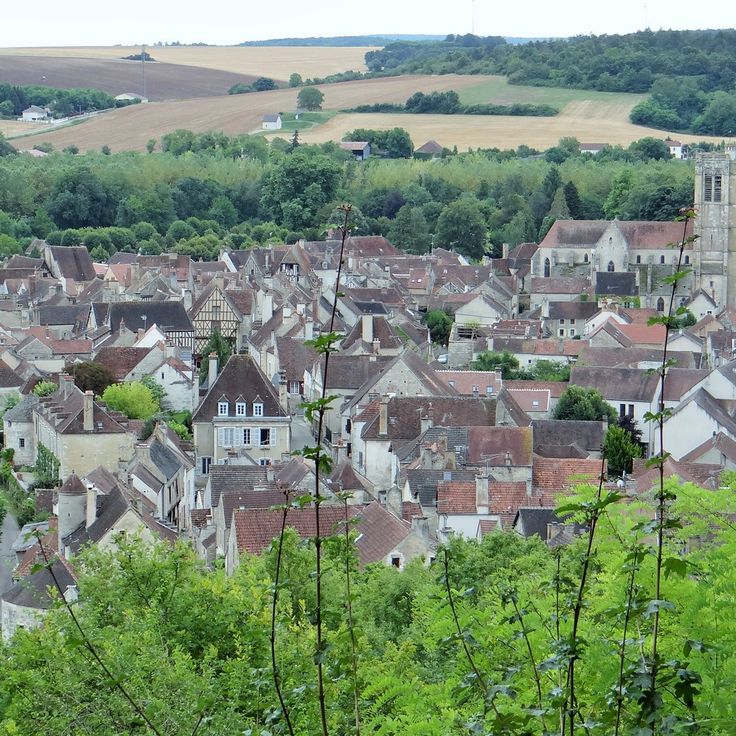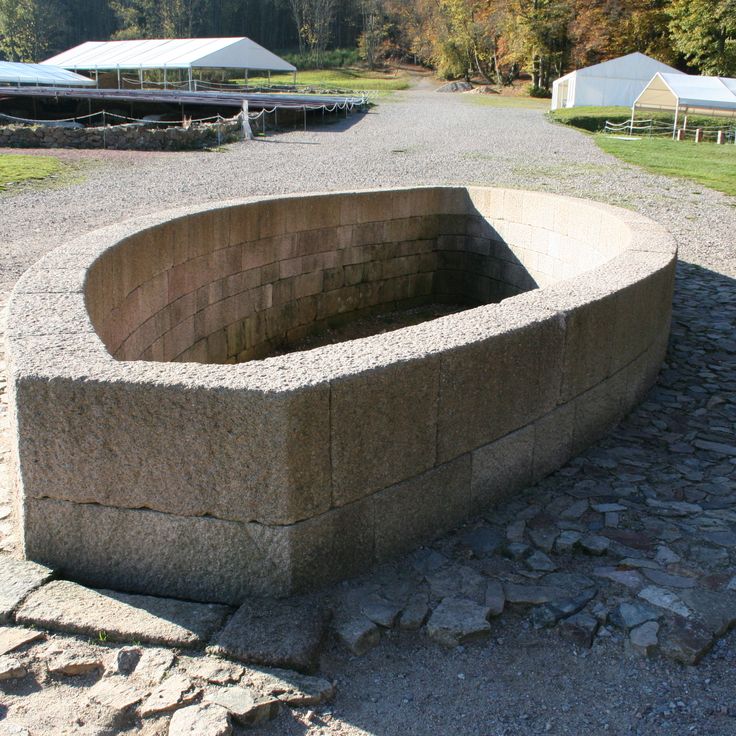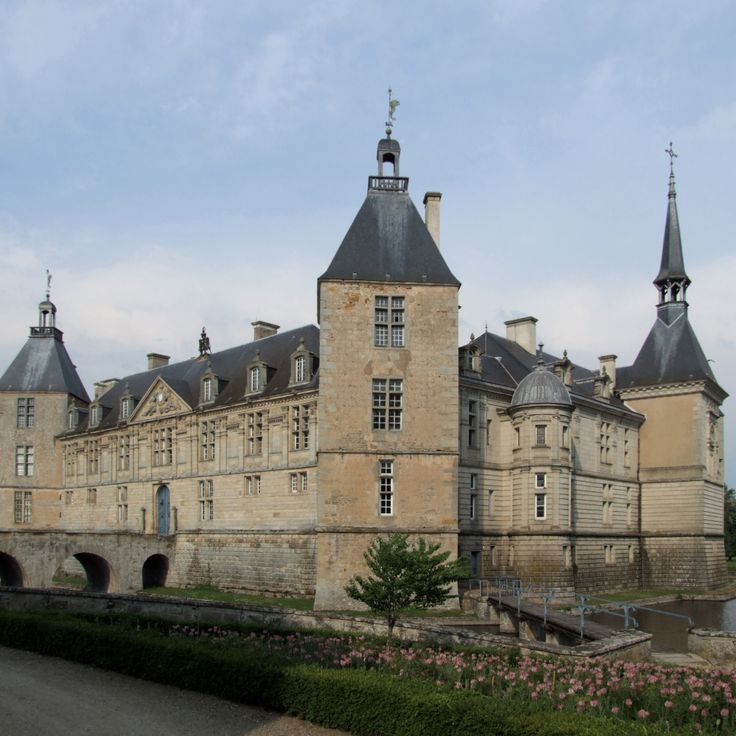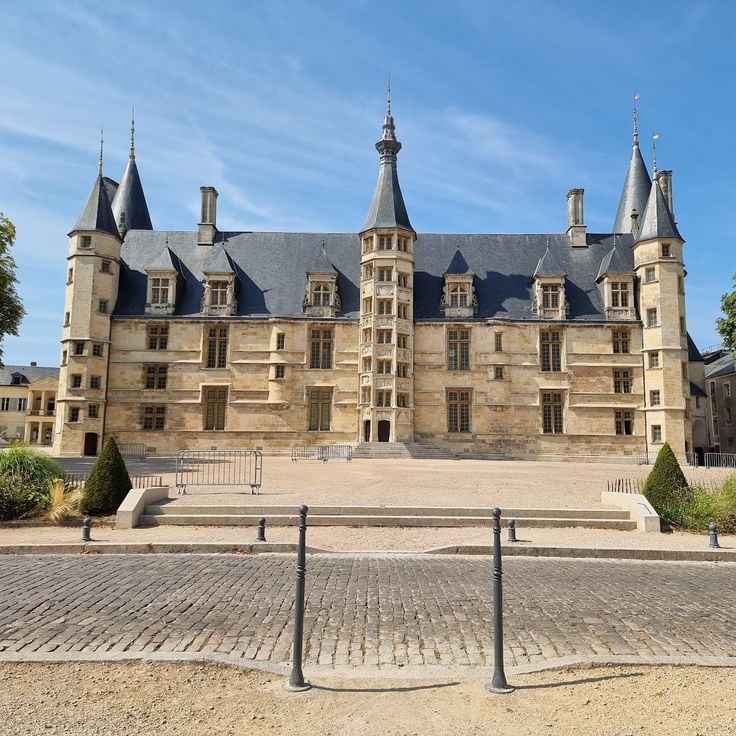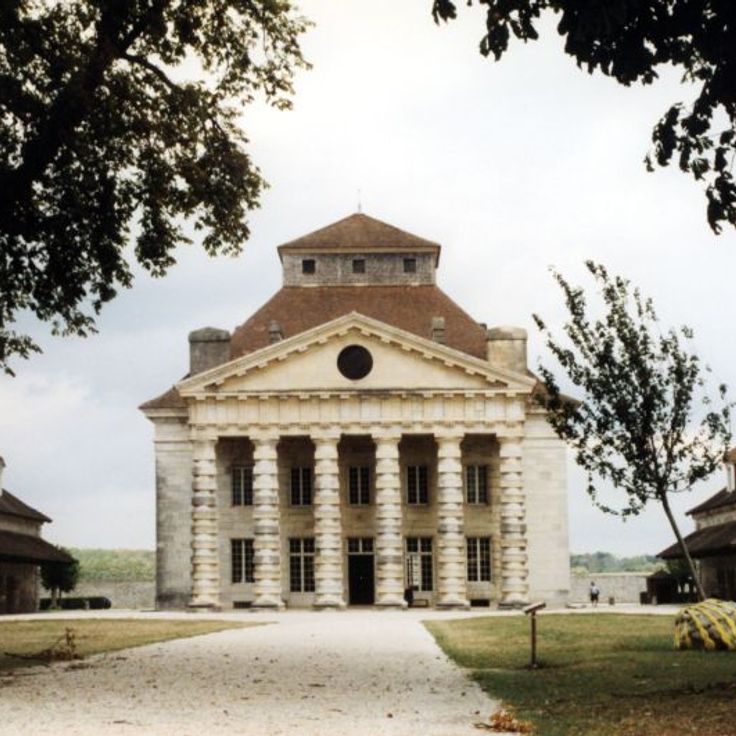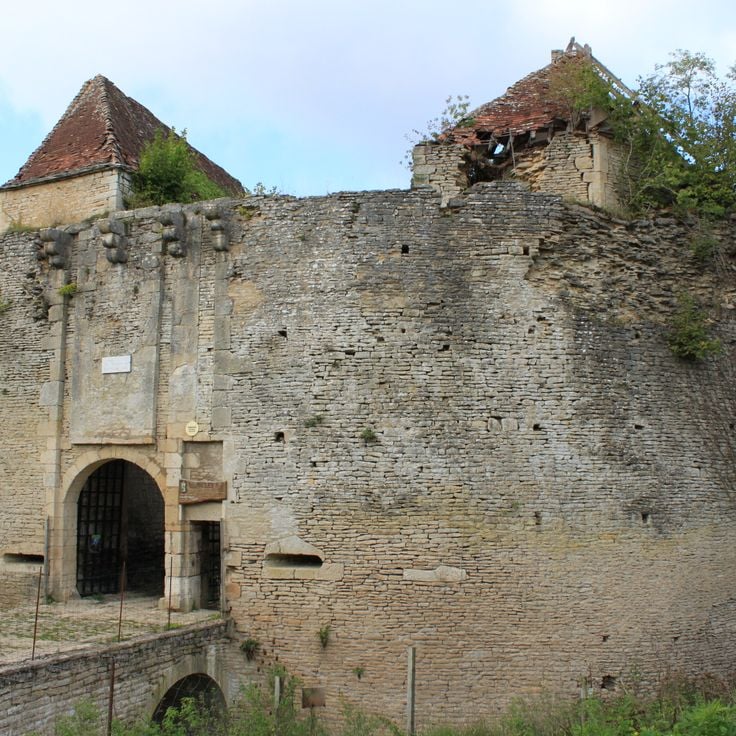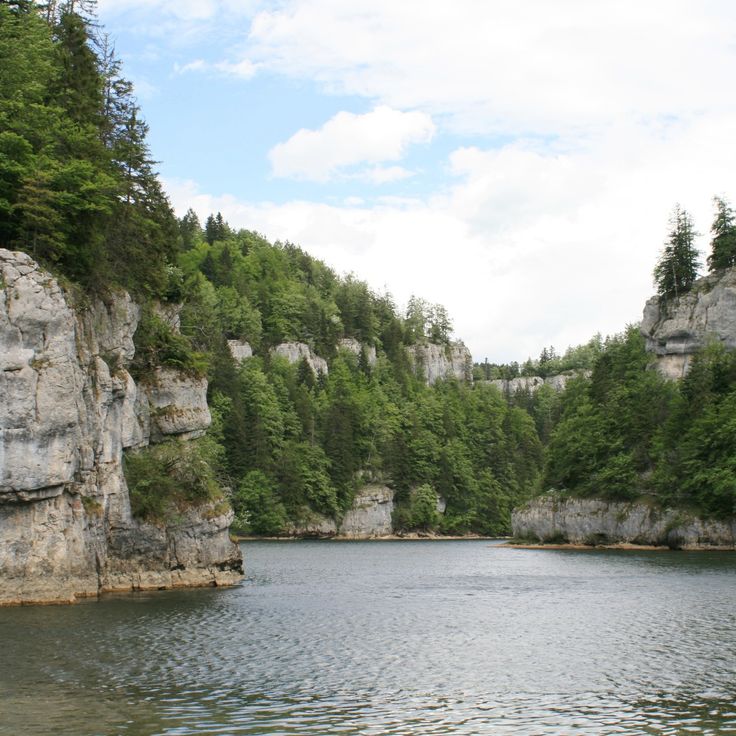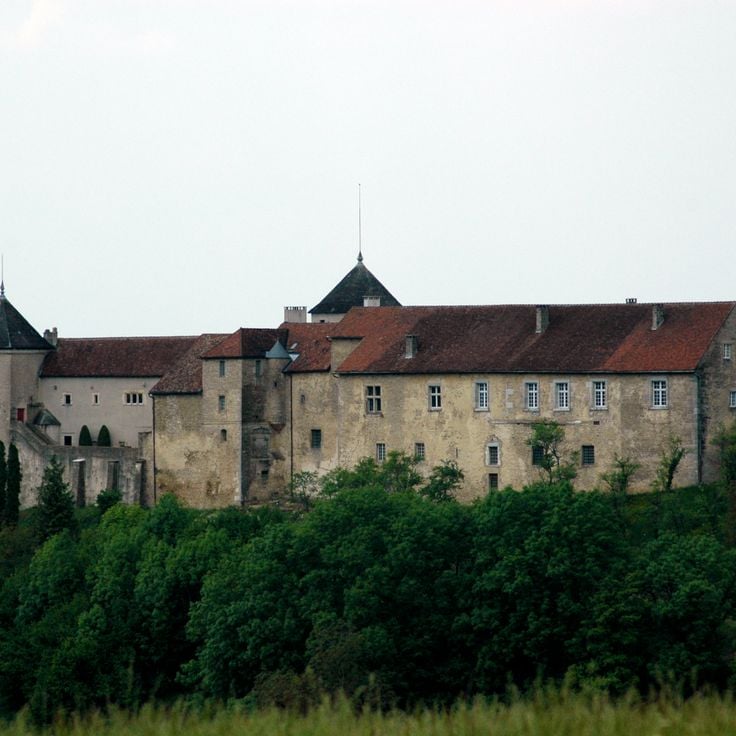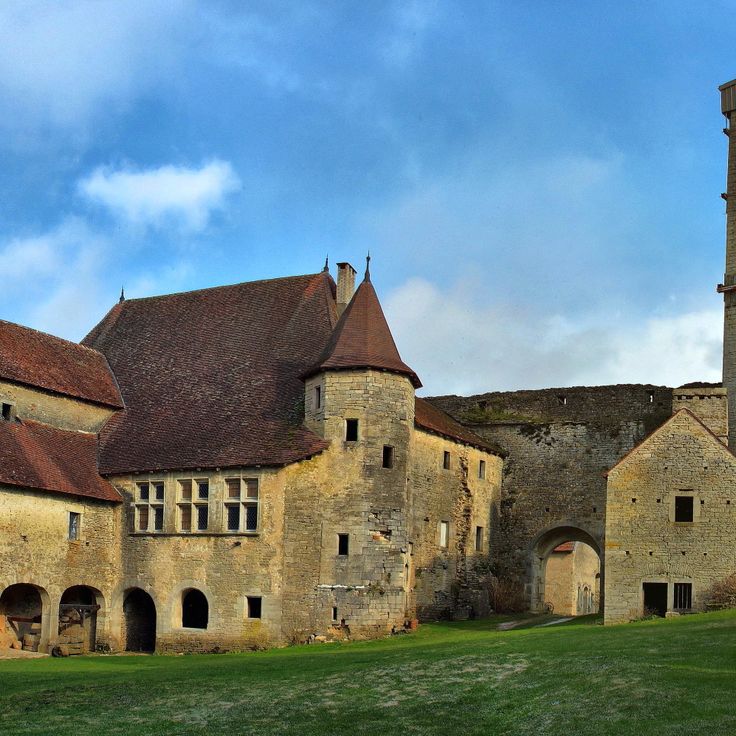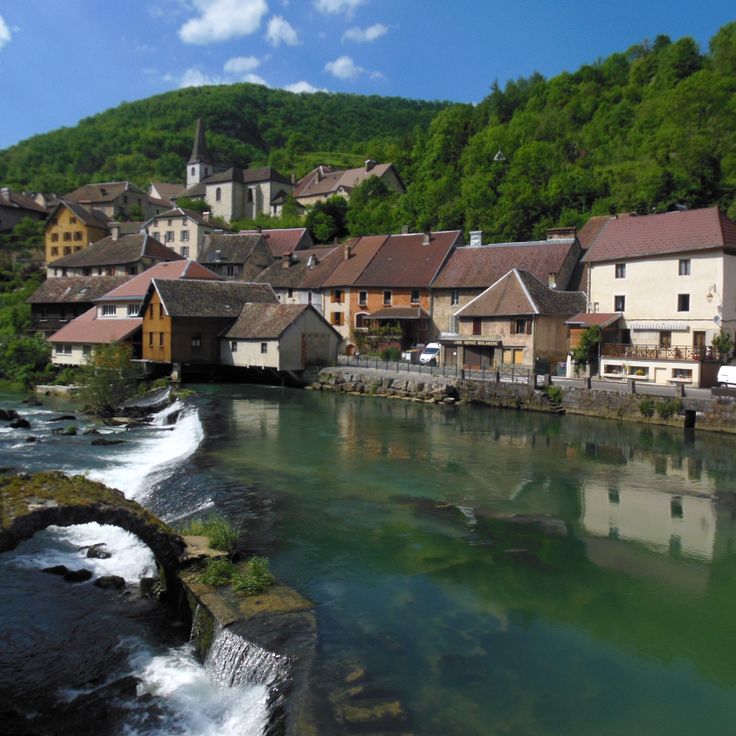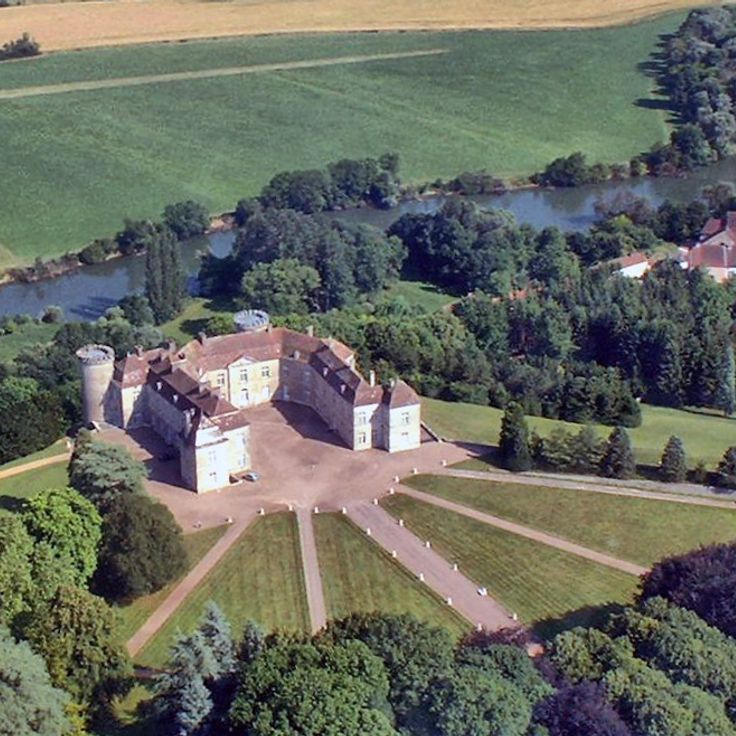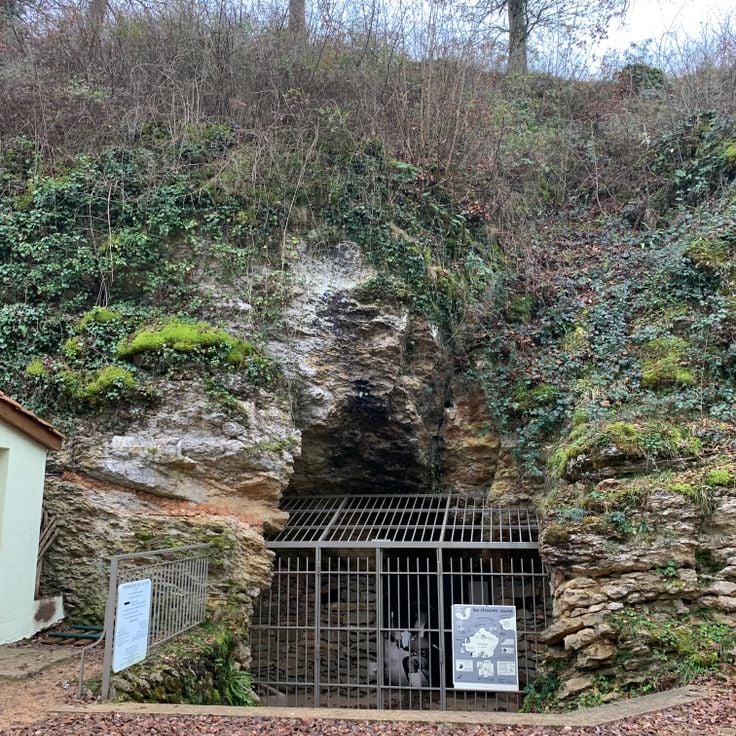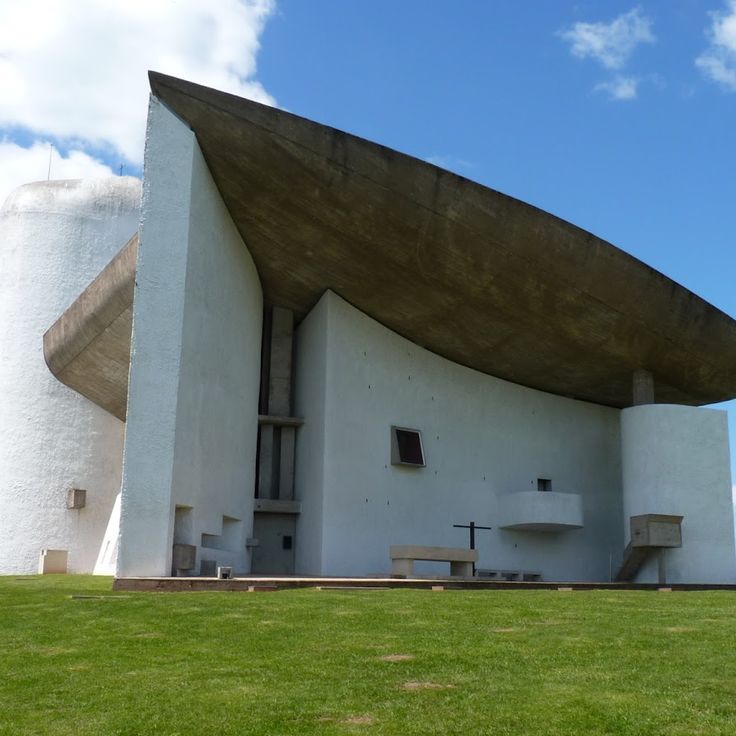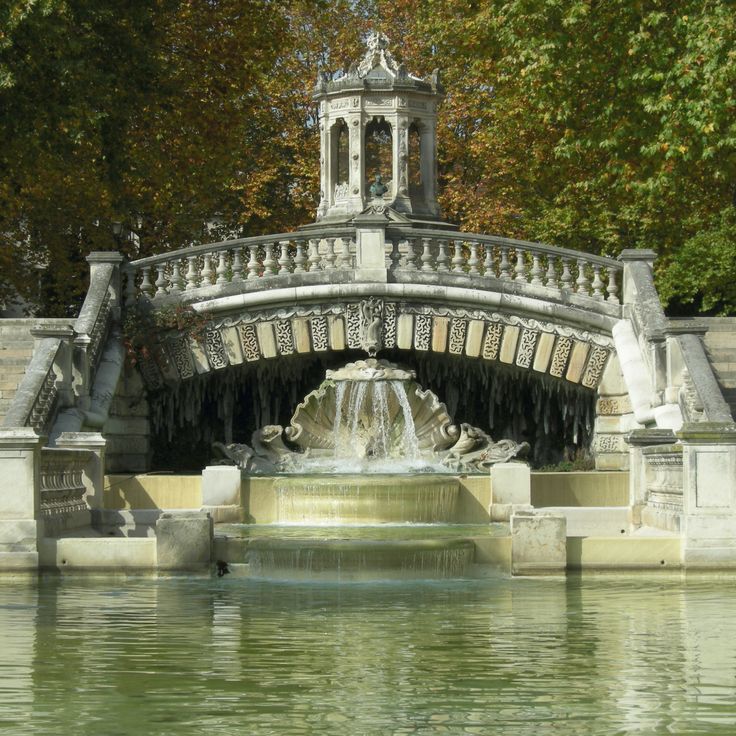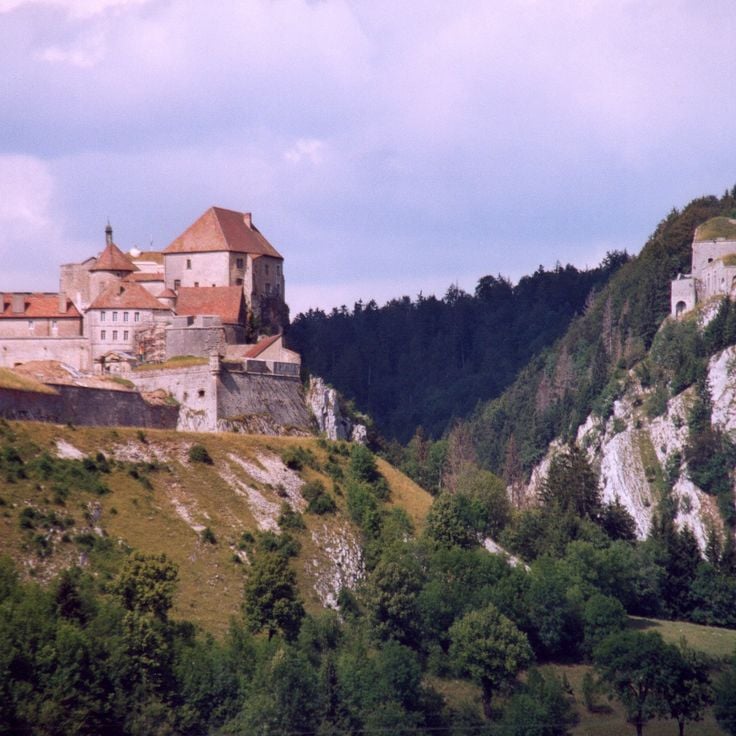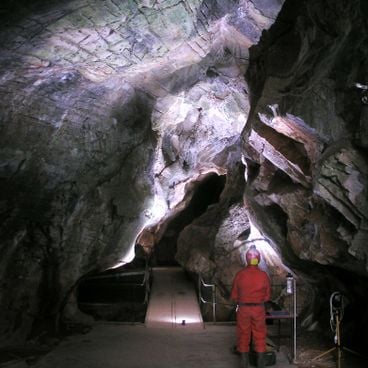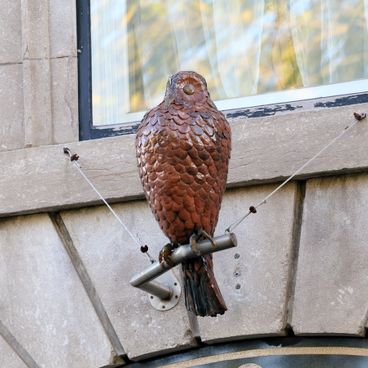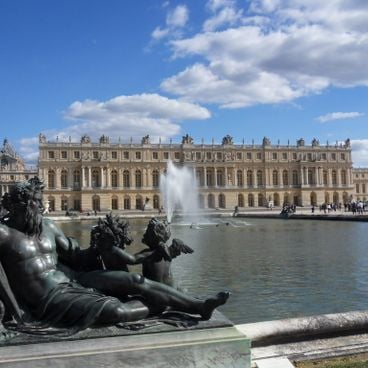Burgundy-Franche-Comté encompasses a varied heritage that spans several millennia. The region houses prehistoric sites such as the Roche de Solutré, monasteries founded as early as the 6th century like Baume Abbey, as well as medieval fortresses and Renaissance homes. Natural formations include the Osselle Cave, open to the public since 1751, and the Hérisson Waterfall, which features seven cascades over nearly 2.5 miles in the Jura mountains. The area is characterized by diverse terrain, from vineyards and mountain foothills to valleys and limestone plateaus. Visitors can explore the Cormatin Castle with its formal gardens, observe the ongoing construction of Guédelon Castle using 13th-century techniques, or explore the underground galleries of the Osselle Cave. These sites attest to human habitation and geological changes over the centuries.
Grotte d'Osselle is a karst cave in Burgundy-Franche-Comté that has been open to visitors since 1751. The cave extends over 4,265 feet (1.3 kilometers) and contains numerous calcite formations and underground lakes. This geological site illustrates the natural history of the region through its mineral deposits and subterranean waterways. The cave represents one of the early French tourist attractions and documents the growing public interest in geological phenomena during the 18th century.
This 12th-century castle stands on a hill at an elevation of 1,640 feet (500 meters) and serves as evidence of medieval architecture in the Burgundy-Franche-Comté region. The keep of Château de Châteauneuf reaches a height of 66 feet (20 meters) and provides insight into medieval fortification systems. The fortress is among the historic monuments that document the strategic importance of the region during the feudal era. The preserved walls and towers demonstrate the construction methods of Burgundian defensive structures from this period.
The Cascade du Hérisson features seven waterfalls that extend over 2.3 miles (3.7 kilometers) with a total elevation drop of 837 feet (255 meters). The tallest of these waterfalls reaches a height of 197 feet (60 meters). This natural formation in the Jura represents an example of the hydrological and geological features of Bourgogne-Franche-Comté and fits within the regional landscape marked by rivers, valleys, and mountain ranges.
The limestone rock of Solutré rises 1,617 feet (493 meters) above the vineyards of Solutré-Pouilly and contains significant Paleolithic archaeological sites. This location has yielded thousands of tools, animal bones, and remains of hunting camps from various prehistoric periods. The rock gives its name to the Solutrean culture, a prehistoric culture known for its advanced stone tool techniques. The archaeological museum at the base of the rock presents artifacts recovered from excavations and documents the prehistoric occupation of the Bourgogne-Franche-Comté region.
Château Cormatin from the 17th century displays state rooms with gilded murals, wood paneling, and preserved period furniture. The French garden extends across 12 acres and includes water moats, hedge labyrinths, and orchards. Interior spaces preserve Renaissance and Baroque elements, including painted ceilings in private apartments. The estate documents French nobility architecture and lifestyle during the reign of Louis XIII. As part of the Burgundy-Franche-Comté historical landscape, this structure illustrates the region's transition from medieval to early modern periods.
Abbaye de Baume is a Benedictine monastery from the 6th century in the Jura region, displaying architectural features from multiple historical periods. The Romanesque church exhibits typical structural elements of that architectural style. Three apses carved directly into the mountain rock represent an exceptional integration of natural and built environments. The cloister provides insight into monastic architecture and the daily routines of the Benedictine community. This abbey illustrates the development of religious structures in the Bourgogne-Franche-Comté region over more than 14 centuries.
These botanical gardens extend across 8 hectares (about 20 acres) of terraced grounds and present water features, ponds, and a diverse plant collection. The Jardins Barbirey combine historical garden design with botanical diversity, offering insight into the French landscape architecture of the Burgundy region. The grounds include various plant zones connected by water elements and walking paths. These gardens reflect the landscape and botanical tradition of Bourgogne-Franche-Comté.
The Prieuré Marast is a Romanesque monastery from the 12th century featuring an underground chapel and historic stone sculptures. This priory represents the monastic architecture of medieval Burgundy and preserves elements of Romanesque construction. The underground chapel constitutes a notable architectural feature, while the stone sculptures reflect the artistic tradition of the region. The monastery integrates into the historic landscape of Haute-Saône and documents the religious history of Bourgogne-Franche-Comté through its structural evidence and preserved medieval framework.
The Château de Rosières dates from the 14th century and rises among the vineyards of Bourgogne-Franche-Comté. The architecture of this castle reflects the influence of Burgundian noble families from the medieval period. The structure sits in Saint-Seine-sur-Vingeanne and represents the feudal history of the region through its construction and location within the historic wine-growing areas. The castle documents the architectural development of Burgundy during the late Middle Ages.
The Château de Guédelon is an experimental construction project ongoing since 1997. Craftsmen are building this medieval castle using only 13th-century techniques and tools. The project provides insight into historical construction methods and demonstrates the architectural practices of the Burgundy-Franche-Comté region during the Middle Ages. The site serves as a working educational center for historical craftsmanship and shows the gradual development of a fortification following medieval principles.
The Château d'Ancy-le-Franc is a 16th-century Renaissance palace in Burgundy known for its interior featuring 500 wall paintings. This collection of frescoes depicts scenes from mythology and history, reflecting the artistic movements of the French Renaissance. The castle was designed following Italian architectural principles, combining classical symmetry with decorative grandeur. The wall paintings were created by various artists over several decades and provide insight into 16th-century courtly culture. The château stands as one of the notable architectural monuments in the Bourgogne-Franche-Comté region.
The Roche de Anse is a limestone outcrop rising 656 feet (200 m) above the Saône Valley. From this vantage point, views extend across the river landscape and the vineyards of Beaujolais. The geological formation sits at the edge of Bourgogne-Franche-Comté, marking the transition between river valley and wine country. This rock formation is among the natural elevations that shape the region's topography and provide insight into its geological character.
This karst spring in the center of Tonnerre is a geological formation with a circular basin measuring 23 feet (7 meters) in diameter. The Fosse Dionne emerges from an underground system whose depth remains unknown despite several diving expeditions. The turquoise water flows from the limestone bedrock at a constant temperature and feeds into the town. The spring was used since ancient times and enclosed with a stone washhouse in the 18th century. The basin sits in a public square surrounded by historical buildings.
Noyers-sur-Serein displays medieval architecture from the 12th century with half-timbered houses and fortifications from the feudal period. The village sits along the banks of the Serein River and preserves its original layout with narrow streets, watchtowers, and stone gateways. Houses feature exposed timber frames, carved corbels, and facades from different centuries. Fortification walls surround the historic center, which represents one of the preserved examples of medieval settlement architecture in Burgundy.
This Celtic city from the first century BC extends across 490 acres (200 hectares) of mountainous terrain on Mont Beuvray. Bibracte served as the capital of the Aedui, a powerful Gallic tribe, and played a central role in the history of Gaul before Roman conquest. The archaeological site reveals remains of fortifications, residential quarters, workshops, and public buildings. The museum displays artifacts documenting daily life, craftsmanship, and trade of the Celtic population.
The Château de Bazoches is a 12th-century fortified manor that served as the residence of the Marquis de Vauban. The rooms contain an extensive collection of military plans and maps documenting his work as an engineer and fortification designer. The castle demonstrates the development of French military architecture from the medieval period through the reign of Louis XIV. The historic halls preserve personal items and documents belonging to the Marquis, including his strategic designs for more than 300 fortifications throughout France.
Château de Sully from the 16th century displays French Renaissance architecture with characteristic towers, battlements, and symmetrical facades. The castle served as home to multiple generations of the Mac Mahon family, whose most notable member served as marshal under Napoleon III and later became President of France. The estate includes a main building with courtyard, outbuildings, and a park with mature trees. Interior rooms preserve furniture, tapestries, and personal belongings of the Mac Mahon family, offering insight into French noble life from the 16th through 19th centuries. This castle stands in the Burgundy countryside and documents the architectural development of French manor houses during the Renaissance period.
The Palais Ducal de Nevers combines Italian and French architecture from the 16th century. The building stands on a hill above the Loire River and shows the architectural development of the region during the Renaissance. The residence of the Dukes of Nevers represents the cultural exchange between Italy and France during this era. The elevated position provides views over the river and the city.
This royal saltworks was built in 1775 and demonstrates an innovative approach to industrial architecture through its semicircular layout. The production buildings served for salt extraction from nearby brine springs and were designed by Claude-Nicolas Ledoux. The complex demonstrates the technical and architectural developments of French industrial history in the 18th century and represents a notable example of utopian urban planning in the Bourgogne-Franche-Comté region.
Château de Rochefort was built in the 13th century as a medieval fortress and stands on a hill above the commune of Rochefort-sur-Nenon. The site preserves elements of medieval military architecture, including defensive walls and towers. From the fortress, views extend over the Doubs valleys. This château combines historical structures with the Bourgogne-Franche-Comté landscape and documents the strategic importance of such fortifications in the region during the Middle Ages.
The Gorges de la Rivière Doubs in the heart of Franche-Comté feature limestone cliffs formed by regional erosion. This gorge offers trails along the river and observation points where visitors can watch birds and mammals. The formation represents one of the geological characteristics of this French region and provides insight into the natural processes that have shaped the riverbed over thousands of years.
The Château de Belvoir dates from the 11th century and sits on a rocky outcrop above the Doubs Valley. This fortress includes a keep, fortifications, and a courtyard with Renaissance elements. The military architecture demonstrates the transition from medieval defensive structures to more representative living spaces of later centuries. The château served for centuries as a strategic control point over the surrounding territory and today preserves its historical structures as evidence of Burgundian military architecture.
The Château d'Oricourt is a medieval fortress in Bourgogne-Franche-Comté that preserves authentic defensive elements from its construction period. The structure includes two defensive towers, a drawbridge, and arrow slits that provide insight into medieval military architecture. This castle documents the fortification techniques of the era and displays the structural characteristics of a defensive installation. The fortress stands among the historical landmarks of the region that illustrate medieval architecture and construction methods.
Lods presents 16th century stone houses along the Loue River, while vineyards cover the surrounding slopes. The village preserves its historic market square and traditional forges that function as part of its artisan heritage. Narrow lanes connect residential quarters with agricultural areas, and a medieval washhouse system utilizes the river water.
The Château de Ray-sur-Saône from the 18th century represents the aristocratic architecture of Bourgogne-Franche-Comté. This castle houses historical furniture and paintings that document the noble life of past eras. The garden presents a collection of rare tree species and complements the architectural ensemble through its botanical features.
The Blanot Caves form an underground network of limestone caverns in the Saône-et-Loire department. These grottos contain stalactites, stalagmites, and other mineral formations that have developed over millions of years. The cave system extends across multiple levels and reaches a depth of around 260 feet (80 meters). The geological structures demonstrate the processes of limestone dissolution and mineral deposition. The Blanot Caves document the geological evolution of the Burgundy region and provide insight into subterranean landscape formations. Guided tours allow access to the main galleries and chambers of the cave system.
The Abbaye Saint-Philibert de Tournus is an 11th-century Romanesque church that features massive towers, frescoes, and an underground crypt. This abbey church ranks among the most important Romanesque structures in the Bourgogne-Franche-Comté region and documents medieval religious architecture in France. The building displays typical characteristics of Burgundian Romanesque style with its distinctive layout and architectural elements. The crypt and preserved wall paintings provide insight into the religious art and construction techniques of the Middle Ages.
The Chapelle Notre-Dame-du-Haut in Ronchamp was built in 1955 to designs by Le Corbusier and represents modern sacred architecture of the 20th century. The building features curved concrete walls, a vaulted roof, and colored glass windows that fill the interior with natural light. This chapel stands on a hilltop and forms an important example of Le Corbusier's late architectural work. As part of the cultural landscape of Burgundy and Franche-Comté, it documents the development of religious architecture in the postwar period and belongs to the UNESCO World Heritage listing of Le Corbusier's architectural works.
The Musée Gustave Courbet presents the work of French painter Gustave Courbet, who was born in Ornans. This museum occupies several historic buildings along the Loue River and displays paintings, drawings, and documents from different periods of the artist's career. The collection includes landscapes, portraits, and scenes of rural life from the 19th century. This museum documents the development of Realism in French painting and shows the connection between Courbet's artistic work and his home region.
This public garden in Dijon was laid out in 1880 and follows the English landscape style. The Jardin de l'Arquebuse bears the name of engineer Henry Darcy and complements the historical and natural sites of the Burgundy-Franche-Comté region. The grounds provide insight into 19th-century French garden design and now serve as a botanical garden with a natural history museum.
The Fortress of Joux stands on a rocky outcrop above La Cluse-et-Mijoux near Pontarlier. The medieval structure was expanded and reinforced for military purposes in the 18th century. Five defensive rings surround the original keep, built in the 11th century. The fortress served for centuries as a border stronghold and prison, housing figures including Toussaint Louverture and Mirabeau. The complex documents the evolution of French military architecture from the Middle Ages to modern times and provides insight into the strategic importance of the Jura region.
The tower of Philip the Good rises 151 feet (46 meters) above the Ducal Palace of Dijon and offers visitors a view over the city after climbing 316 steps. This part of the ducal residence documents the power of the Burgundian dukes during the medieval and Renaissance periods. The viewing platform provides an overview of the historic old town with its rooftops, church spires, and the surrounding Burgundian vineyards. The tower belongs to the architectural complex of the palace, which today houses the Museum of Fine Arts and provides central insights into the history of the region.
